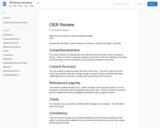
https://most.oercommons.org/courseware/lesson/406
- Subject:
- Business and Communication
- Finance
- Material Type:
- Teaching/Learning Strategy
- Author:
- Deb Bauer
- Date Added:
- 07/19/2022

https://most.oercommons.org/courseware/lesson/406
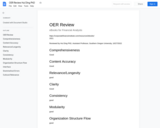
Ebook link: https://corporatefinanceinstitute.com/resources/ebooks/

Inflation has been on many people’s minds. There are several measures of inflation available, and each one plays a role in providing a more complete understanding of inflation’s causes and effects. This Page One Economics® Econ Primer describes key measures of inflation, including the consumer price index, and how the Federal Open Market Committee pays particular attention to these measures as it makes policy decisions—adjusting its policy stance when necessary to move the economy toward maximum employment and price stability.
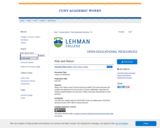
What is risk? What is return? How are these two related? This lecture discusses the variables that determine the risk and return of stocks. Additionally, it describes the historical tradeoff between risk and return. Finally, it discusses diversification in stock portfolios.
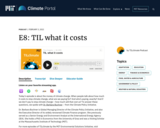
Today’s episode is about the money of climate change. When people talk about how much it costs to stop climate change, what are we paying for? And who’s paying, exactly? And if we don’t pay to stop climate change – how much will that cost us? To answer these questions, we spoke with Dr. Barbara Buchner from the Climate Policy Initiative.

Overview: This lesson goes over saving plans, different types of savings accounts, money market accounts, and certificate of deposit accounts. There is a short review at the end of the presentation along with a game.
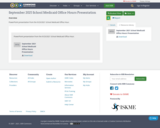
PowerPoint presentation from the 9/23/2021 School Medicaid Office Hour.
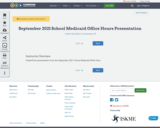
PowerPoint presentation from the September 2021 School Medicaid Office Hour.

The student or pupil remembers about share certificate and its contents.The pupil develops understanding of various contents of the share certificate.The pupil applies knowledge to check that given certificate is share certificate which include all the contents. The pupil analyses that which class of sharecertificate is issue to the holderThe pupil develops interest in having theirown share certificate is from the company inwhich they invest their money.

The familiar magnetic stripe credit cards used for decades in the United States are being phased out. Read about the new smart-chip credit cards, designed to reduce fraud and improve security, in the March 2016 issue of Page One Economics: Focus on Finance.

Students will be able to explore credit-related concepts and tools, delving into key terms including credit, credit cards, installment loans, revolving credit, student loans, mortgage, payday loans, predatory lenders, and simple interest in this lesson.
Class Time Needed: 75-83 minutes (block schedule class-time)
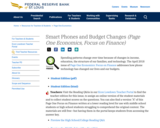
Spending patterns change over time because of changes in income, education, the structure of our families, and technology. The April 2018 issue of Page One Economics: Focus on Finance addresses how phone technology has changed our lives and our budgets.
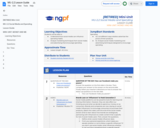
Overview: Estimated Lesson Time: 45 minutes
Students will be able to:
-Understand how social media can influence spending habits
-Analyze marketing techniques from social media and advertising that encourage spending
ANSWER KEY LINKS: Create a Next Gen Personal Finance (NGPF) account to access answer keys. They will be listed under the Full Year Curriculum tab.
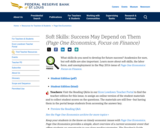
What skills do you need to develop for future success? Academics for sure, but soft skills are also important. Learn more about soft skills, the labor force, and unemployment in the May 2016 issue of Page One Economics: Focus on Finance.
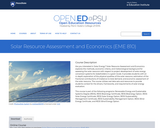
Are you interested in Solar Energy? Solar Resource Assessment and Economics explores the methods, economic criteria, and meteorological background for assessing the solar resource with respect to project development of solar energy conversion systems for stakeholders in a given locale. It provides students with an in-depth exploration of the physical qualities of the solar resource, estimation of the fractional contributions of irradiance to total demand, and economic assessment of the solar resource. The course utilizes real data sets and resources to provide students context for the drivers, frameworks, and requirements of solar energy evaluation.

To understand the overview of various sources of Finance in financial Market
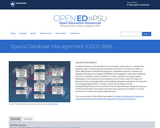
A spatial database is the backbone of a successful organization or website that depends upon maintaining and using data pertinent to locations on Earth. In GEOG 868, Spatial Database Management, capabilities specific to Relational Database Management Systems (RDBMS) and Geographic Information Systems (GIS) are combined to teach students to create, maintain, and query spatial databases in both desktop and enterprise environments. Learn the basics of Standard Query Language (SQL) and database design/normalization, the specifics of managing spatial data in an open-source technologies context (Postgres/PostGIS) and in the context of the Esri geodatabase. Along the way, you will become familiar with spatial functions and versioning, the latter in a server environment hosted by Amazon Web Services.

Students listen to the story Spend It! This story is set in Bunnyland where carrots are money. Sonny the bunny has three carrots in his allowance jar. Sonny wants to buy everything, and he learns that he must make a choice because he does not have enough carrots to spend on everything he wants. Students will learn and review new vocabulary from the story (spend, wants, and choice) by completing a spelling activity, and complete a statement using the words. Students will also earn carrots by completing addition and subtraction math problems. Using the carrots they earn, students work with a partner to calculate if they have enough to purchase a toy they want from a list provided to them.
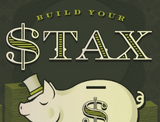
Stax is an interactive game from Next Gen Personal Finance that let's students see the consequences of 20 years of investing decisions.
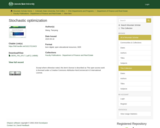
Lecture notes on applications of stochastic optimization in financial risk management